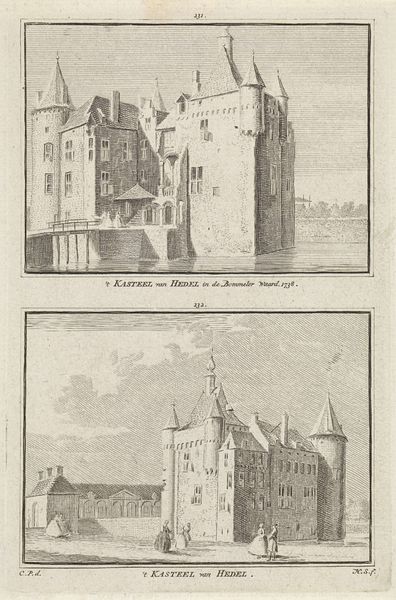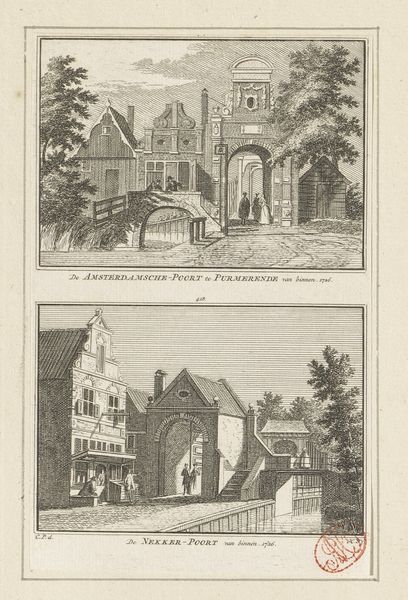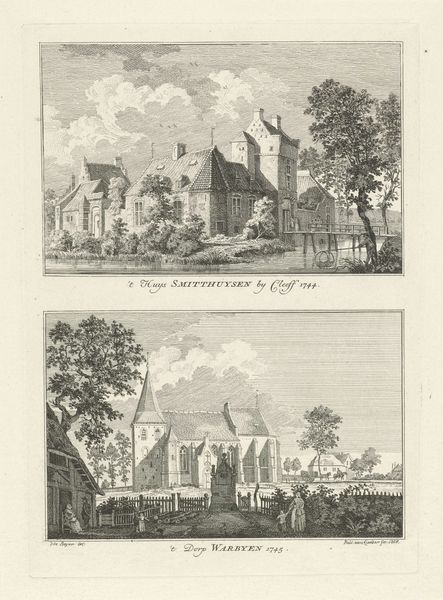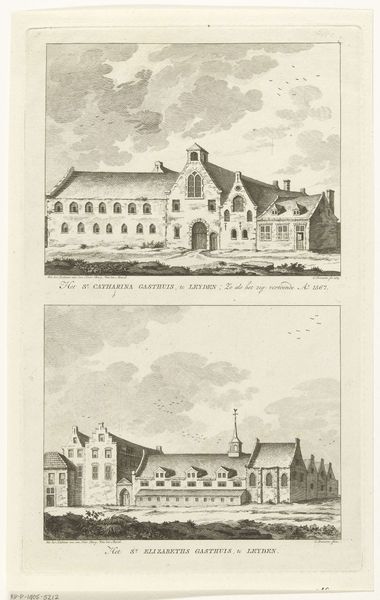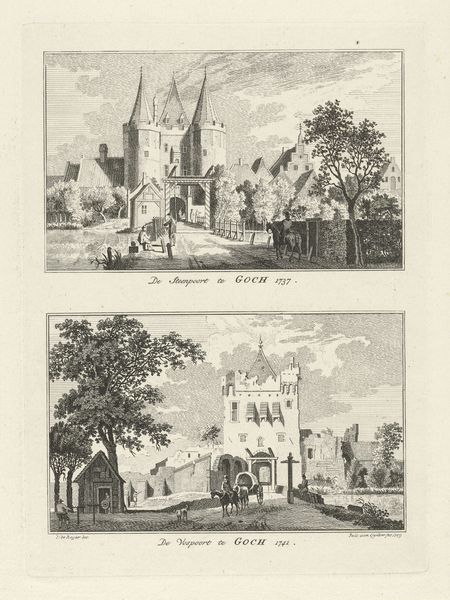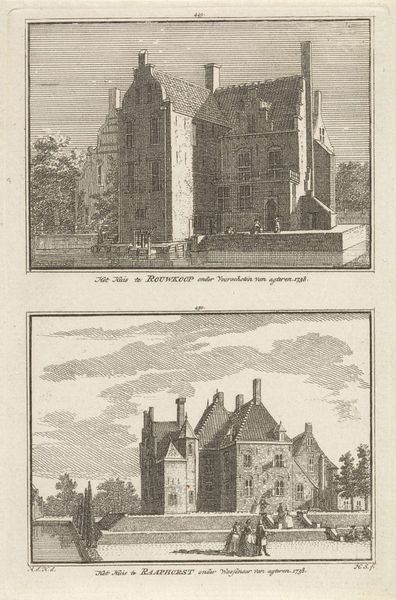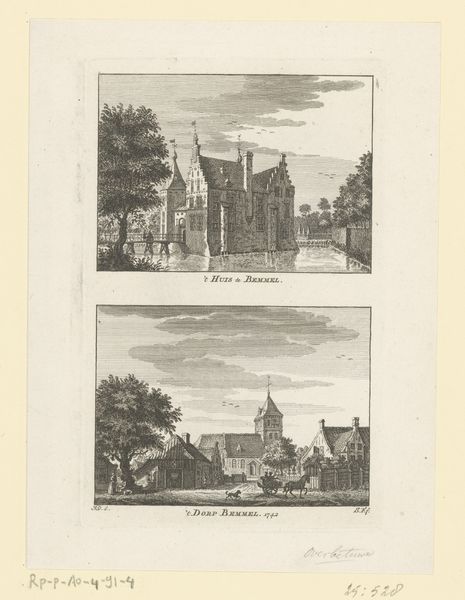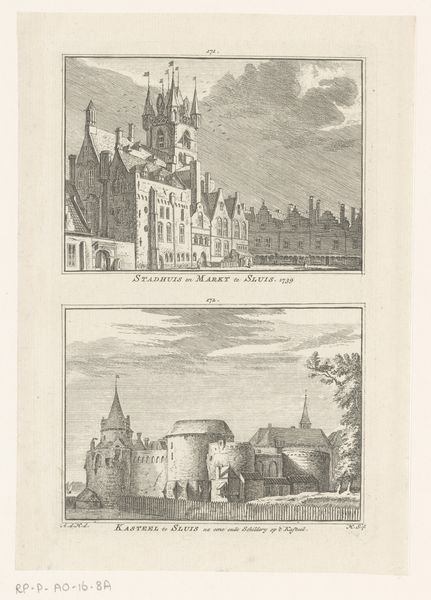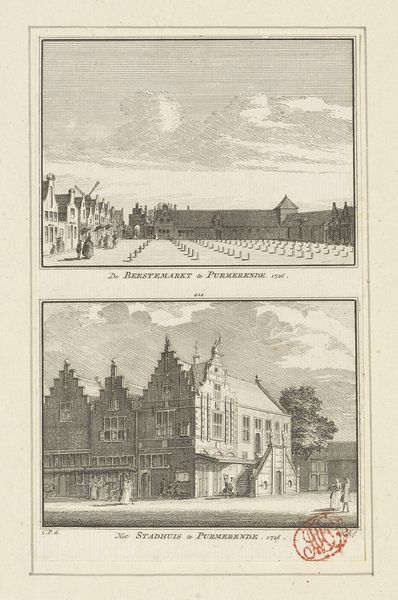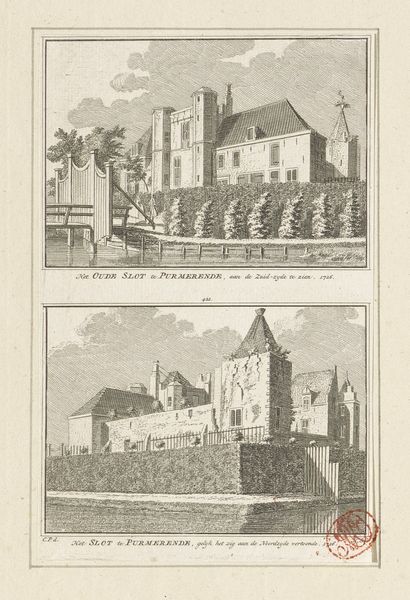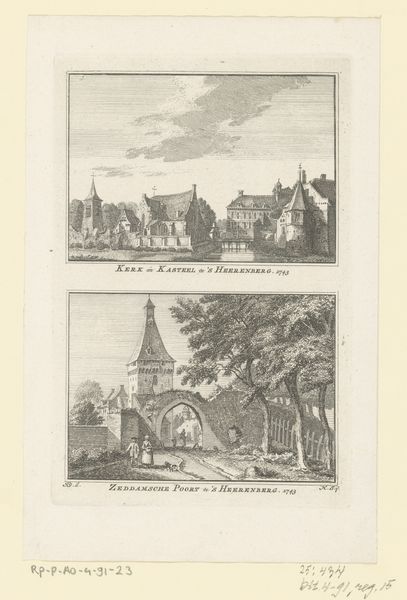
print, engraving, architecture
#
baroque
#
dutch-golden-age
# print
#
landscape
#
engraving
#
architecture
Dimensions: height 165 mm, width 110 mm
Copyright: Rijks Museum: Open Domain
This print by Hendrik Spilman gives us two views of the House te Blotinghe in Rijswijk. This artwork prompts us to consider the public role of art in 18th century Netherlands. Prints like this were often commissioned by or for the owners of such estates. The image creates meaning through visual codes of status and power, emphasizing the wealth and prestige of the inhabitants. The meticulous detail and idealized representation reflect a desire to project an image of stability and authority. The symmetry and order in the architecture speak to a self-consciously conservative worldview, reinforcing traditional social hierarchies. To fully understand this artwork, it is important to examine the economic and social structures of the time, including the role of the Dutch elite. Researching archival documents, such as estate records and family histories, would provide additional insight into the function of the house within its social context. This helps us see how art is contingent on its social and institutional environment.
Comments
No comments
Be the first to comment and join the conversation on the ultimate creative platform.
